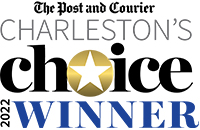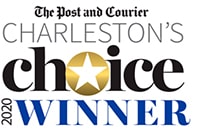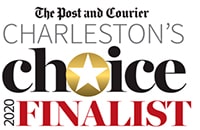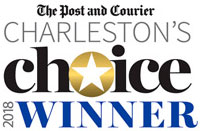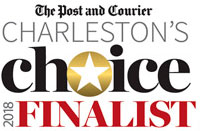A True Charleston Treasure: Sweetgrass Baskets
With more than 50 resident Gullah artisans, the Charleston City Market is the very epicenter of sweetgrass basketry, one of the nation’s oldest and most beautiful handicrafts of African origin.
For more than 300 years, people in Charleston have been weaving baskets using locally-harvested bulrush, a strong yet supple marshgrass that thrives in the sandy soil of Lowcountry. Originally used as winnowing fans to separate the rice seed from its chaff, sweetgrass baskets are regarded among the nation’s most prized cultural souvenirs.
The Smithsonian American Art Museum’s permanent collection includes a sweetgrass basket made by Mary Jackson, whose finely detailed, sculptural baskets first appeared at the Charleston City Market in 1980. Her devotion to the centuries-old craft was recognized on the world stage in 2008 when the MacArthur Foundation named Mary a MacArthur Fellow, an unsolicited global recognition of greatness that is accompanied by a $500,000 fellowship, often referred to as the “genius grant.”
Now in her 70s, Mary works on private commissions out of her personal studio, and the next generation of Gullah weavers are sharing the time-honored tradition of sweetgrass baskets with visitors to the Charleston City Market. One such young artist is Corey Alston. Representing the fifth generation of his family to weave baskets, Corey recently shared his passion and knowledge with the Tennis Channel. Special thanks to Tennis Channel for allowing us to share the video clip here.
Discover the Gullah tradition of Sweetgrass Basket weaving at the Charleston City Market.
“Today, the market buzzes with residents and visitors alike, perusing stalls loaded with toys, clothes, leather goods and regional souvenirs. But if you plan on buying anything here, you should head straight to the “basket ladies.” These women have been weaving baskets for centuries — this craft originated in West Africa and has been passed down through the generations — using local materials such as sweetgrass and palmetto leaves.” — U.S. News & World Report
SWEETGRASS
BASKETS
This style of basket was originally made to winnow rice on local plantations. Today, sweetgrass baskets are works of art and highly sought after souvenirs.
Read MoreCertified
Authentic
When you see the Certified Authentic Handmade in Charleston seal, it means a product is 100% locally made.
Read MoreSpend the
Whole Day
Meet locals. Shop for great souvenirs. Take a tour. Enjoy local cuisine. Check into a hotel overlooking the Historic Charleston City Market.
Read MoreMeet the
Market
Get to know the passionate entrepreneurs, traditions, and certified authentic Made in Charleston items found at the Historic Charleston City Market.
Read More

